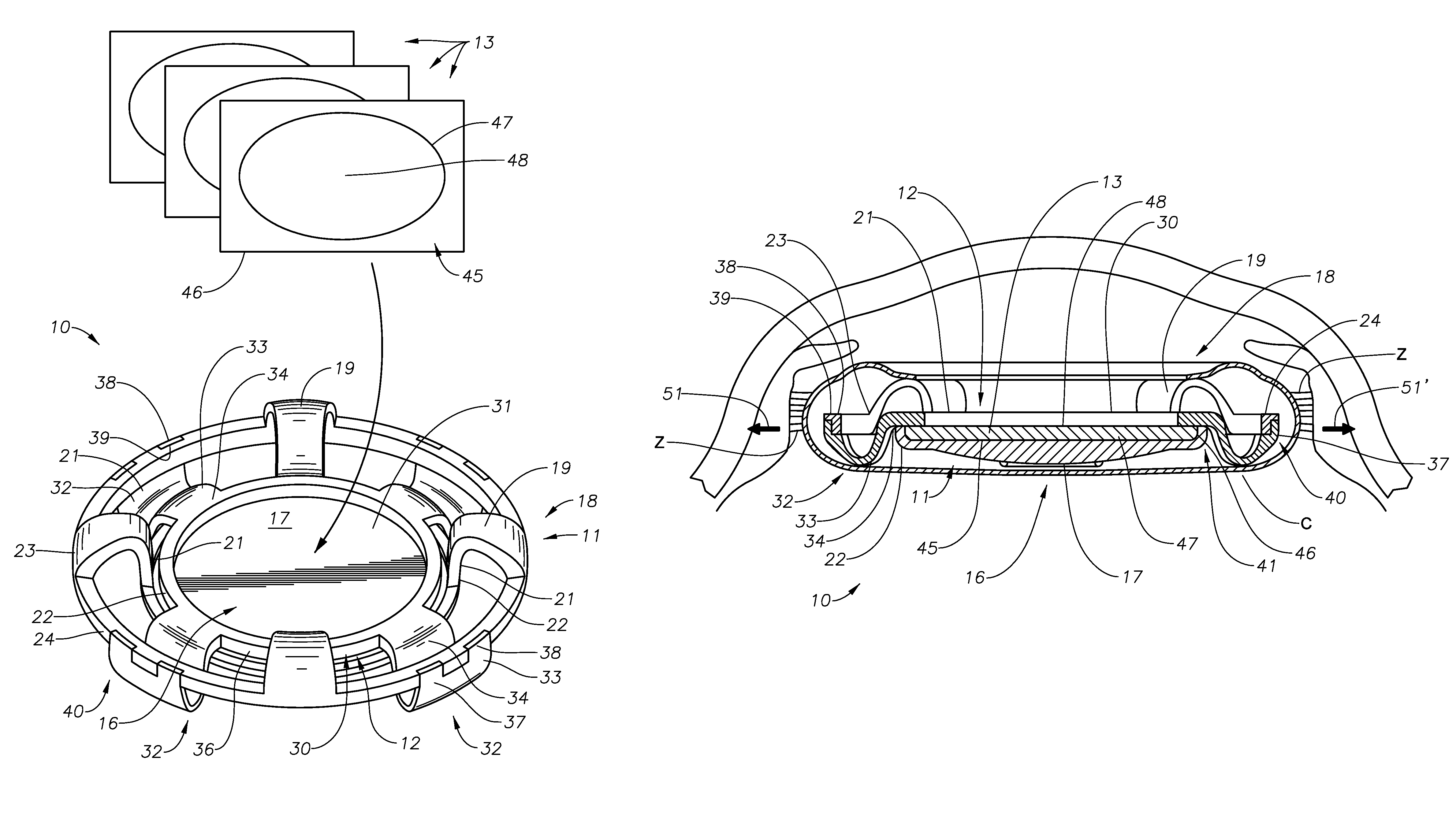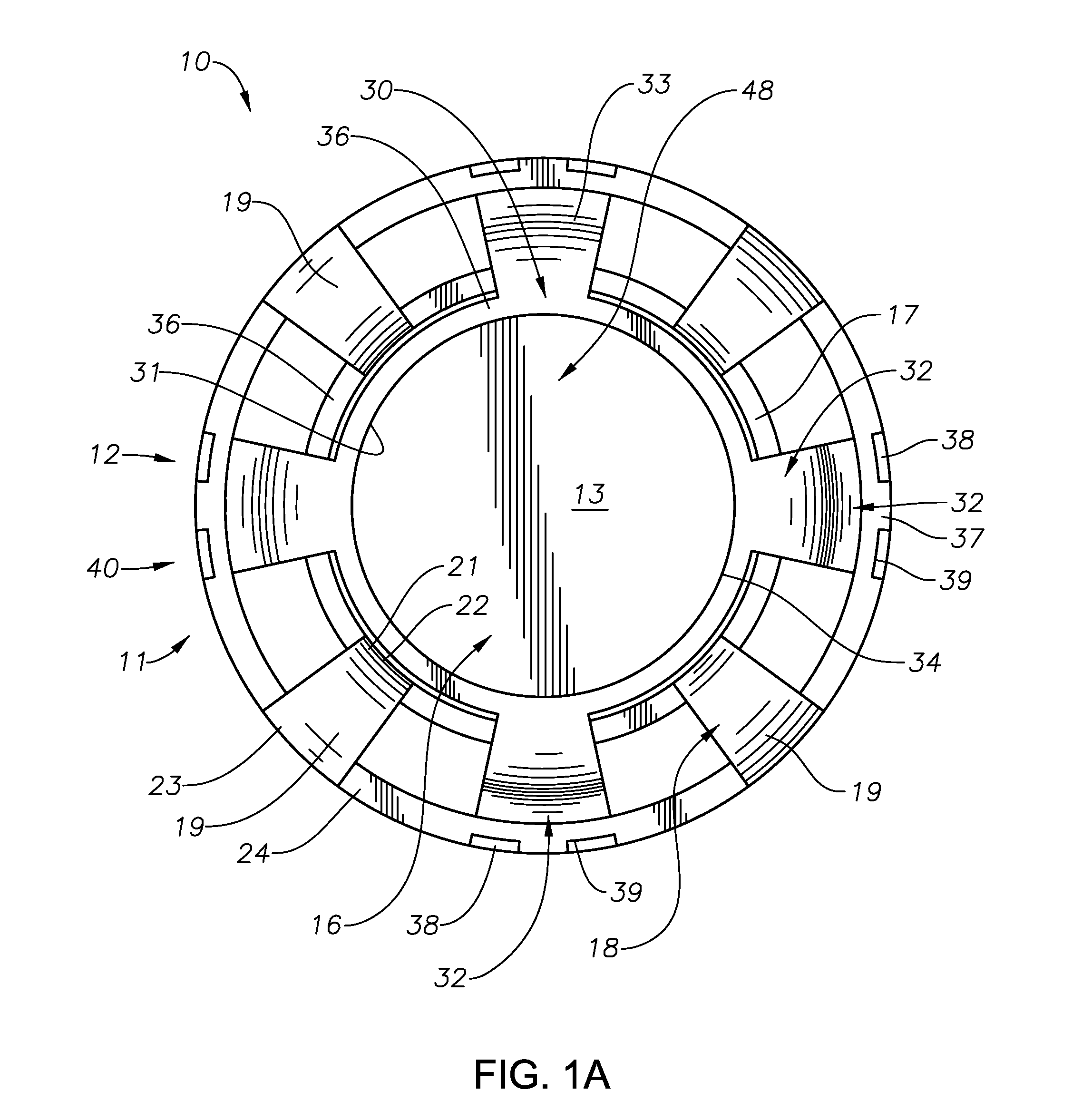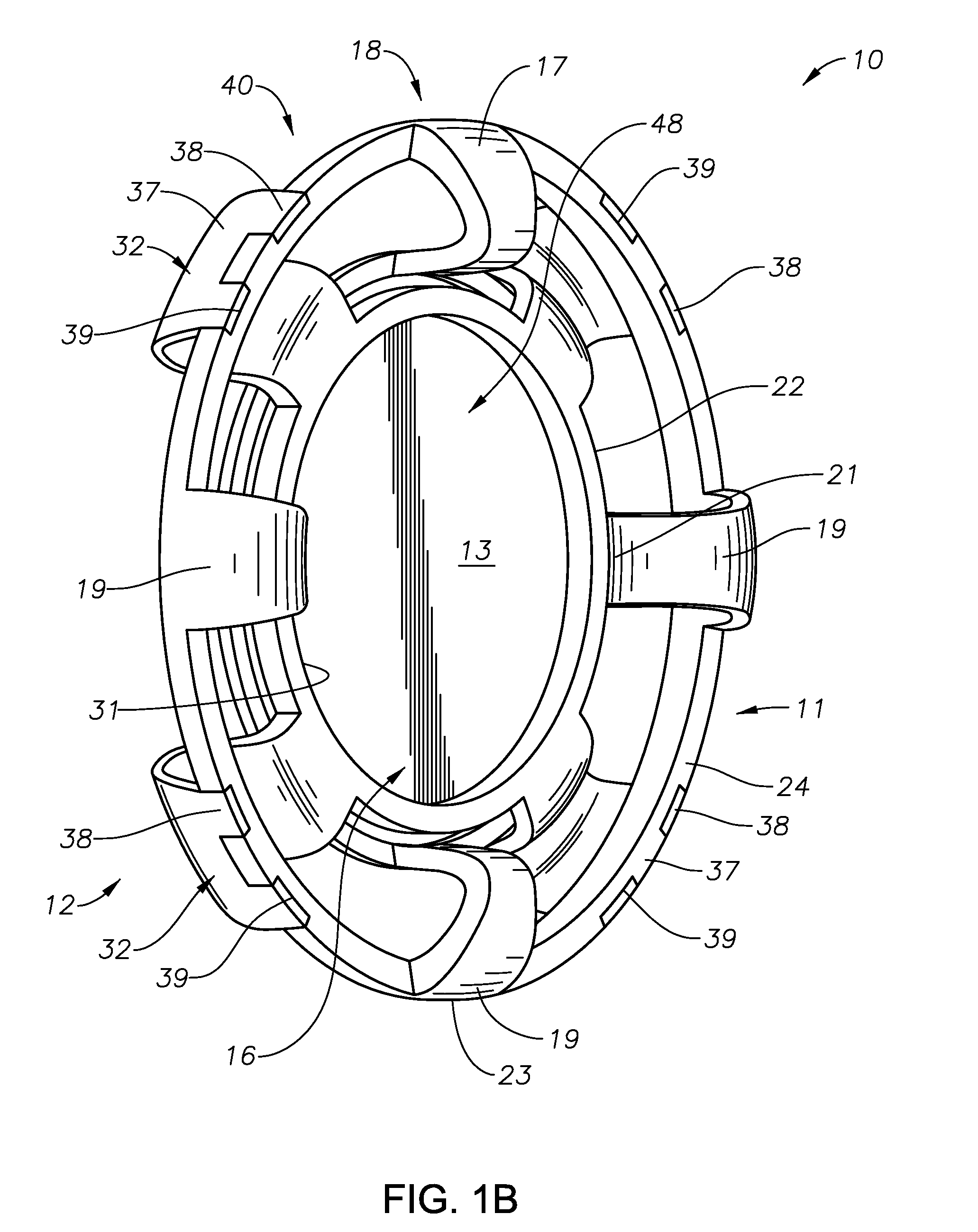Curvature changing accommodative intraocular lens
a technology of curvature and iol, applied in the field of intraocular lenses, can solve the problems of reducing the effectiveness of iol in correcting the vision of patients, unable to provide consistent and continued accommodation of such iols, and unable to achieve the effect of restoring presbyopic vision
- Summary
- Abstract
- Description
- Claims
- Application Information
AI Technical Summary
Benefits of technology
Problems solved by technology
Method used
Image
Examples
Embodiment Construction
[0020]Referring now in greater detail to the drawings in which like numerals indicate like parts throughout the several views, FIGS. 1A-3 generally illustrate one embodiment of a curvature changing accommodative intraocular lens (IOL) and components thereof according to the principles of the present invention. The IOL 10 of the present invention generally can be implanted into the eye of a patient for correction of visual deficiencies of the patient's eye due to cataracts and / or residual refractive errors or astigmatism for enabling correction of the patient's vision in response to the natural accommodative operation and function of the patient's eye. As indicated in FIGS. 4A-4B, the IOL 10 generally can be implanted within the capsular bag C of the patient's eye, so as to be engaged by the capsular bag during accommodating and disaccommodating movements or operations of the patient's eye. The position or location of the implanted IOL further can be varied as needed, as will be unde...
PUM
 Login to View More
Login to View More Abstract
Description
Claims
Application Information
 Login to View More
Login to View More - R&D
- Intellectual Property
- Life Sciences
- Materials
- Tech Scout
- Unparalleled Data Quality
- Higher Quality Content
- 60% Fewer Hallucinations
Browse by: Latest US Patents, China's latest patents, Technical Efficacy Thesaurus, Application Domain, Technology Topic, Popular Technical Reports.
© 2025 PatSnap. All rights reserved.Legal|Privacy policy|Modern Slavery Act Transparency Statement|Sitemap|About US| Contact US: help@patsnap.com



